Le Cake-Walk au Nouveau Cirque (1903) by Louis Lumière, five short films of cakewalk dance teams performing, including Rudy and Fredy Walker
___________________________________
page originally published on 6 June 2014; latest edit: 15 June 2021
___________________________________
Between November, 1902 and January, 1903, Paris experienced its first tastes of the danced cakewalk through the performances of two American touring ensembles: “Les Elks” and their troupe of black and white dancers appeared in the revue Les Joyeux Nègres at the Nouveau Cirque, while the “Florida Creole Girls” [link added]—seven African-American women—performed the cakewalk at the Casino de Paris. Within a matter of weeks the dance became the latest sensation of the capital, as reported in Paris qui chante of January, 1903, although not without serious dissension. It was upon this field of social and cultural contestation that Debussy entered into the world of syncopated Americanism with Golliwogg’s Cake-walk from the Children’s Corner (1908).
— From the article “Debussy’s Cakewalk: Race, Modernism and Music in Early Twentieth-Century Paris,” by James Deaville, in volume 2, n° 1, janvier 2014 of La Revue musicale OICRM*
(above) n°s 142/5, 142/8, and 142/7 from the set of ten c. 1903 French S.I.P.** postcards, series n°142: “Le Cake-Walk, Dansé au Nouveau Cirque, Les Enfants Nègres,” featuring juvenile brother and sister dance team Rudy and Fredy Walker. The complete set of ten postcards can be found on my page Rudy and Fredy Walker, c.1903 French S.I.P. postcard series #142, “Le Cake-Walk.” On that page you will also find excerpts from a biographical sketch of the Walkers by Dr. Rainer E. Lotz.
From the biography of the Walkers by Dr. Lotz:
Ruth “Rudy” and Frederick “Fredy” Walker (31 Aug. 1891–after 1928) and (9 Nov. 1893–May 1977) [respectively], known as The Walkers, song and dance entertainers and actors, were both born in Chicago. It appears that at some time in 1902 the two juvenile dancers, brother and sister, traveled to Europe in the company of their mother, Ella Walker, herself an artist, born in Chicago in [1860 or 1864], according to her own conflicting statements.
That they traveled with their own mother is mentioned in June 1903 and again in the winter 1904/1905 in Vienna, December 1906 in Stockholm, in November 1907 in Berlin, and again in February 1908 in Copenhagen. Billed as “Les Enfants Nègres,” their presentations of the cakewalk dance attracted a lot of attention at the Nouveau Cirque at Paris and paved the way for a long career in Europe. They became so popular that they inspired a composer, a sculptor, and a movie film director, as well as cartoonists.
In his brief biography of the Walkers, Dr. Lotz indicates that there was a short film produced featuring Rudy and Fredy Walker (as “Les enfants nègres”), and several other cakewalk artists, performing on the stage of the Nouveau Cirque:
It was presumably the French Pathé company that produced a short film featuring the cake walk performances by both black and white artists on the stage of the Nouveau Cirque. All the artists that can be seen in the film also had a series of postcards devoted to them. They are “Les enfants nègres,” with ten postcards in series 142 (by early 1904 motifs of the original French series 142 were marketed in the United States by Franz Huld, Publisher, New York, in their series III “Cake Walk—Negro Dance”), “Les Soeurs Pérès” from Spain (postcard series 143), “Les Nègres” from the United States (series 144), and “The Elks”, also from the United States (postcard series 145). Charles Gregory also had his own series of postcards, but he is not identified by name and the cards simply state “Nègre Joyeux.”
Clips from the “short film” described by Dr. Lotz above are combined in the following video. Except that the clips come from a set of five short films, not one, and they were made by Louis Lumière, not the French Pathé company as suggested by Dr. Lotz.
The image above, from a page in the book Catalogue des vues pour cinématographe, by la Société A. Lumière et ses Fils (Lyon, 1907), indicates that the title “Le Cake-Walk au Nouveau Cirque” used by the video provider refers not to a single film but to a series of five Louis Lumière short films, numbered sequentially 1350 through 1354. Most, if not all, of the performers in the films were evidently — see the quote from Deaville’s abstract above, and the postcards above and below — members of a troupe of dancers performing at the Nouveau Cirque in the revue Les Joyeux Nègres at about the same time the films were made. The description under the index agrees with the statement of Dr. Lotz (in quote above) that the films were shot on the stage of the Nouveau Cirque: “Ces vues ont été prises au Nouveau Cirque à Paris.” However, on a page at Catalogue Lumière on the series of five films, where the title of the series is given as merely “Le Cake-Walk” rather than “Le Cake-Walk au Nouveau Cirque,” the filming location is disputed. Following a long quote describing how the cakewalk craze had overtaken Paris since October 1902, from the 10 January 1903 issue of the Paris newspaper L’Illustration (L’Illustration n° 3124, 10 janvier 1903, p.30), we come to a note that says:
Bien que le catalogue de vente indique que ces vues ont été prises au Nouveau-Cirque, il semble qu’elles ont plutôt été tournées à Lyon, lors d’une tournée de la troupe en province, car le décor est similaire à celui de plusieurs autres séries, tournées à Lyon.
which can be interpreted as follows:
Although the sales catalog indicates that these films were shot at the Nouveau Cirque, it seems that they were instead shot in Lyon, during a tour of the troupe in the province, because the scenery is similar to that of several other series shot in Lyon.
Dating the Lumière “Le Cake-Walk au Nouveau Cirque” (aka “Le Cake-Walk”) film series:
- The “Le Cake-Walk” page at Catalogue Lumière dates each film in the series “[hiver 1902-1903] – 15 mars 1903,” suggesting that the films were shot in the winter of 1902-1903, but no later than 15 March 1903.
- Each of the five short films is dated 1903 in the list of Films de la Société A. Lumière et ses Fils, found among the Catalog des films restaurés et numérisés (Catalog of films restored and digitized) at the Archives françaises du film du CNC (Centre national du cinéma et de l’image animée) website.
The titles of the five films in the series, corresponding to the catalog numbers 1350-1354, are given as follows at Catalogue Lumière:
1350……Nègres, [I]
1351……Négrillons
1352……Nègres, [II]
1353……Les Elkes, champions du cake-walk
1354……Final
The titles match those given on the page in Catalogue des vues pour cinématographe cited above, with the exception that in Catalogue Lumière a roman numeral has been added to each of the two films titled “Nègres” to differentiate them.
Internet Movie Database gives the length of one of the films, “Les Elkes champions du Cake-Walk,” as 1 minute. This is the only one of the five films listed in the Louis Lumière filmography at IMDb.
Four of the dance teams in the film series can be readily named by matching each with a corresponding postcard series, while the third dance pair (Lumière n°1352) is not so easily identified.*** With the exception of the unidentified dance pair, comparison of the films in the video below with the examples I’ve given from each postcard series, above and below, indicates that virtually the same outfit is worn by each of the dancers in the Lumière short film as is worn in the corresponding postcard images, suggesting that the photographs and the short films may have been shot at about the same time.
The dance pairs in the film series “Le Cake-Walk au Nouveau Cirque” include:
- n°1350…….“Les Nègres,” a team which consists of two men, the taller one in drag
- n°1351……. “Les enfants nègres,” siblings Rudy and Fredy Walker — The title of the film, “Négrillons,” is a diminutive of “Nègres.”
- n°1352……. Unidentified; the male dancer doesn’t look like the images of Charles Gregory found in the aforementioned “Nègre Joyeux” postcard series***
- n°1353……. “Les Elks” (spelled “Les Elkes” in the 1907 Lumière catalog, but “Les Elks” in the corresponding postcard series)
- n°1354…….“Les Soeurs Pérès” — sisters Jeanne and Nina Pérès, from Spain; they are eventually joined by the other eight dancers in a finale
In the video, Rudy and Fredy Walker are the second cakewalk dance team to appear. Their performance begins at about 56 seconds [0:56]. During the routine by the fourth team, the Elks, [3:10-4:17] while the three teams who have already performed are grouped upstage at the rear wall of the stage set, Rudy Walker is seen flinching and defensively lifting her arms [3:32-3:37] as the wildly flailing cane of the male member of the Elks appears to come dangerously close to her head and upper body. Evidently anticipating further threat, she quickly changes her position, and then immediately begins blowing two-handed finger whistles [3:45] toward the Elks. Moments after she begins whistling, the dancer in the top hat on the far left and she briefly engage in what seems to be a serious shoving match [c. 3:50-4:14].
.
Le Cake-Walk, Dansé au Nouveau Cirque postcards, selected
Les Nègres, series n°144 — n°s 144/4 (left), and 144/6 (right)
(below) Les Elks, series n°145 — (clockwise from top left) n°s 145/1, 145/2, 145/3, 145/8
(below) Les Soeurs Pérès, Jeanne and Nina Pérès — series n°143 (clockwise from top left): n°s 143/8, 143/7, 143/6(?), 143/5, 143/4, and 143/3 (3 and 5 are tinted)
(below) Nègre Joyeux — Charles Gregory, unnumbered series — I don’t recognize the unidentified man in Lumière n°1352 as the same person seen in the “Nègre Joyeux” postcard series
___________________________
See my Rudy and Fredy Walker index:
___________________________
* l’OICRM = l’Observatoire interdisciplinaire de création et de recherche en musique
** S.I.P. = Societe industrielle de photographie, the publisher
*** It’s clear that the male member of the dance pair in Lumière n°1352 dresses in a costume that resembles that worn by Charles Gregory in the “Nègre Joyeux” postcard series (see above), but I’m not convinced that it’s Gregory in the film. However, the female partner in Lumière n°1352 resembles one shown in the center of page 7 of the 31 January 1903 issue of the revue Paris qui Chante (1ère année, n°2). The issue devoted its cover and four full pages to the cakewalk, focusing upon “l’origine et les procédés” of the art form.






















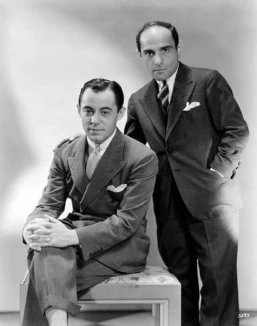

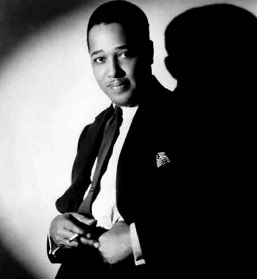


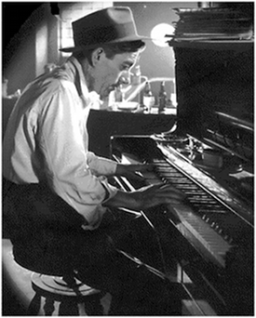
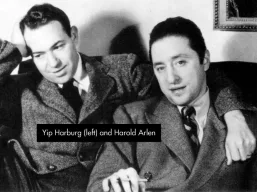




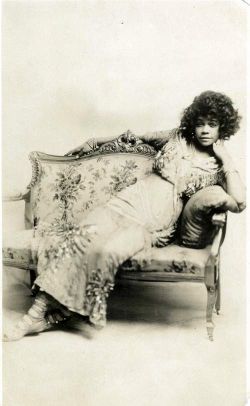










Mar 04, 2017 @ 12:55:28
The Kiddies’ Cakewalk (1903) — produced by Robert W. Paul
LikeLike